The jewels, and especially the tiaras, of the Queen of Spain Letizia ♦ ︎
Like all the queens, letizia Ortiz Rocasolano, wife of Philip VI of Spain, loves jewelry. As a former network journalist such as Bloomberg, CNN and the Spanish public broadcaster Tve, he is well aware of the value of image and visual communication. Clothing and jewelry selection are, therefore, particularly taken care of by Letizia, who married the then Prince of Asturias, Felipe di Borbone, on May 22, 2004. The ceremony was an event followed by TV stations all over the world: on the screens, one of the innumerable tiaras that are part of the royal kit has appeared. It’s a kind of jewel that seems to be among the queen’s favorites.
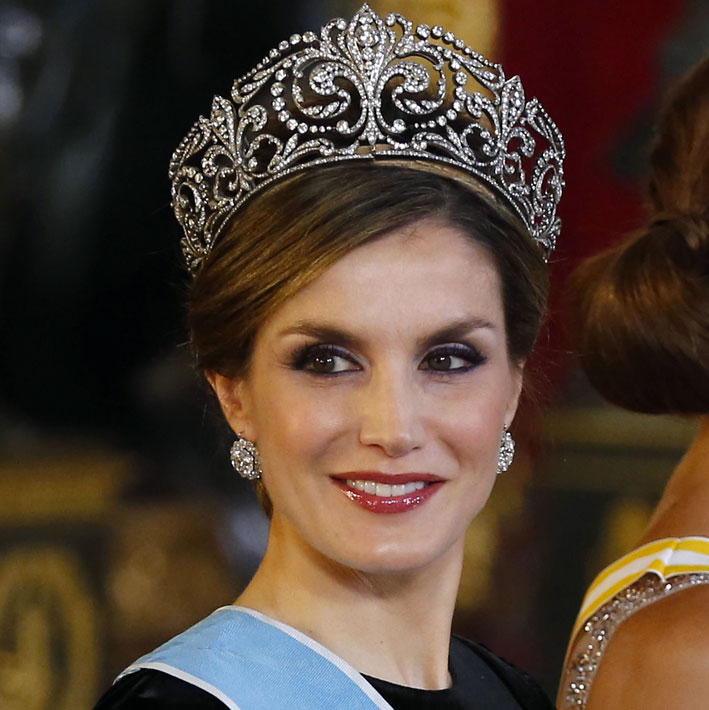
It is no coincidence that to celebrate the wedding anniversary, King Philip VI gave a tiara worth € 50,000 to Letizia: it is made up of 450 brilliant cut diamonds and five pairs of Australian pearls. Alongside the tiaras, of course, the Queen of Spain has many other jewels, including a pair of earrings with three sapphires each and a large Cartier bracelet in white gold and diamonds. About bracelet: Letizia has also decided to turn a diamond crown of Queen Victoria Eugenia. The set diamonds have been removed to be reused in two identical bracelets.
The Prussian tiara. From the neoclassical line with Greek inspiration, the tiara was made in Berlin in 1913 by the jeweler Koch. In platinum and diamonds, it is composed of two bands: the upper part with laurel leaves and the bottom with greek, in the middle a row of vertical bands of diamonds with a central motif from which hangs a pear-cut diamond. She was presented to Sofia by her mother for her eighteenth birthday.
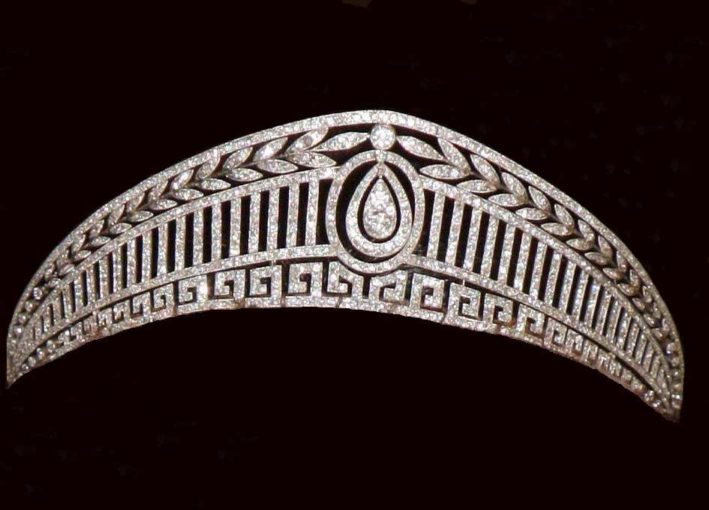
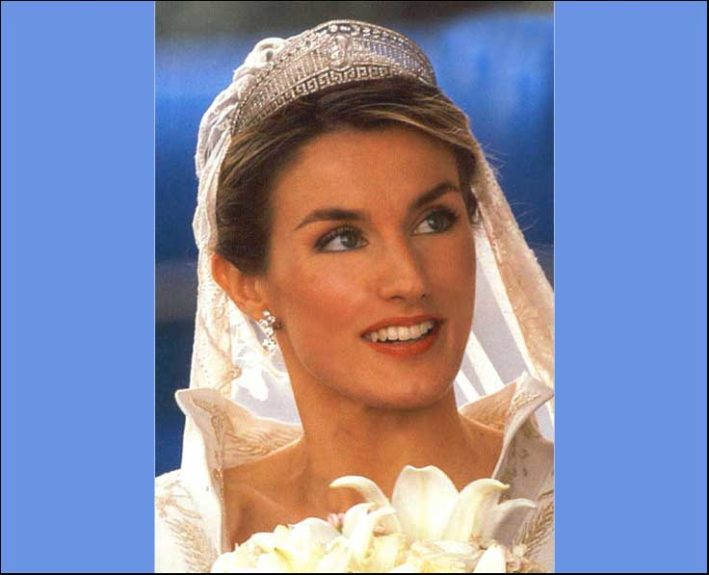
The chatones necklace. King Alfonso Alfonso XIII’s wedding gift to his wife was a type of necklace very popular in the mid-nineteenth century: diamonds set on a platinum plate (chaton) with a very discreet four-stemmed frame. The king used to have two diamonds on every anniversary, birthday or birth. Result? A 90-carat necklace that came up to life. Divided into two parts, one touched Juan Carlos and is often seen at the neck of Sofia of Spain.
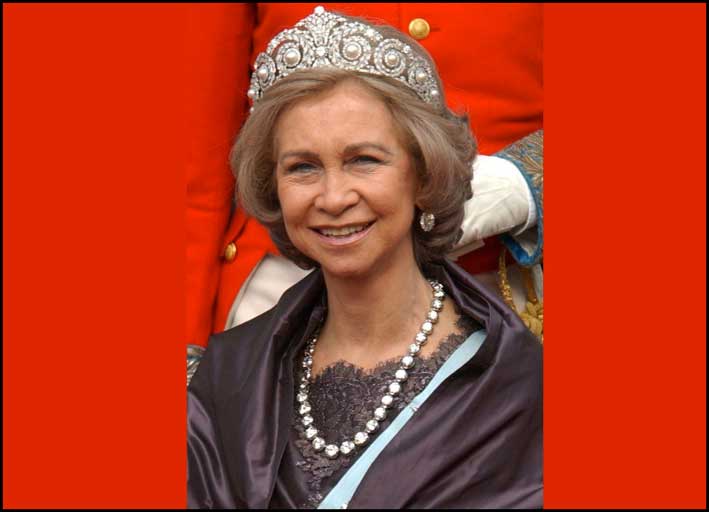
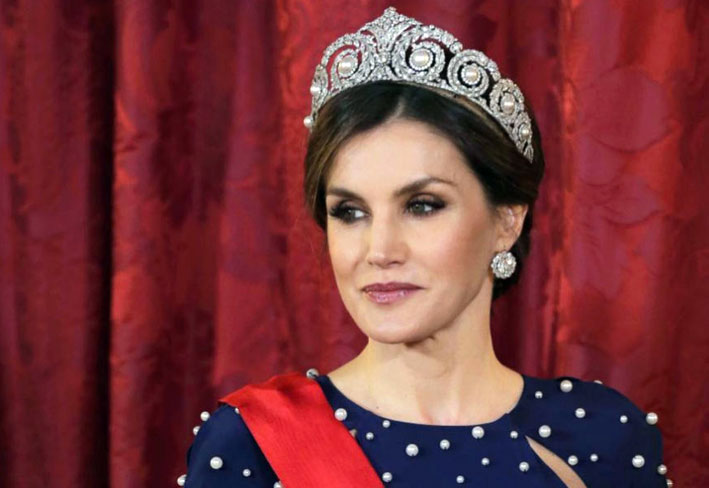
The Cartier tiara. Created in the Twenties for Queen Victoria Eugenia, the diadem is composed of a central aigrette, or a frame or jewel in the shape of a feather, in platinum and diamonds and three sloping curls with a pearl set in the center. In a second time the pearls were replaced by emeralds inherited from the empress Eugenie of France, her godmother. Which were then sold during the Roman exile and the tiara returned to its original appearance.
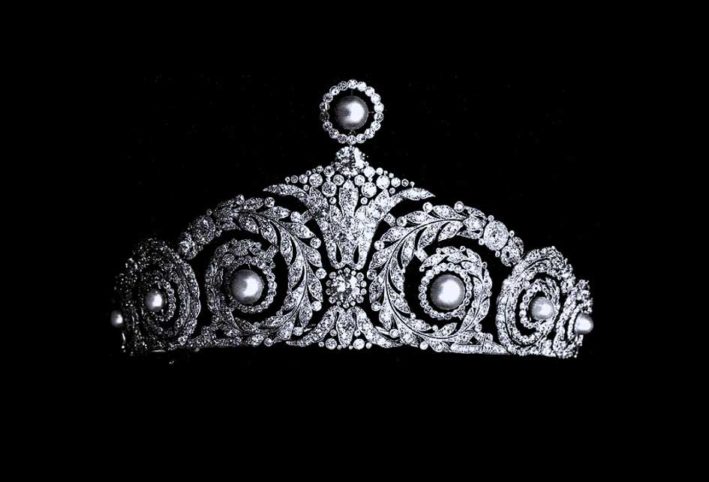
The Mellerio or de la Chata tiara. Isabella II’s gift for her daughter’s wedding, nicknamed Chata, is one of the few jewels that has been saved from the sale during the Paris exile. The platinum structure ideally depicts the foam of a wave in the center and on the sides of the shells from which pear-shaped pearls hang and 12 diamonds that sway following the movements of the head. But a reader of gioiellis.com (see comments at the bottom of this page) points out that the story is another: the Mellerio diadem of pearls and diamonds, he specifies, was not sold to Drouot (30 June 1878) by Isabelle II simply because the queen received an annuity from Spain after the return to the throne of her son, Alfonso, and it is with this money that she bought new jewels from the French jeweler, like a necklace and a star-shaped tiara.
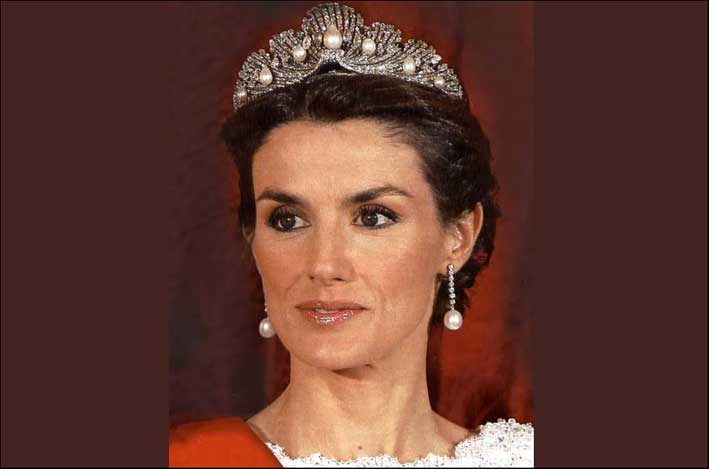
The floral tiara. It turns into a necklace or brooch the diadem composed of large diamond flowers, given by Francisco Franco to Sofia of Greece, betrothed to Juan Carlos of Bourbon.
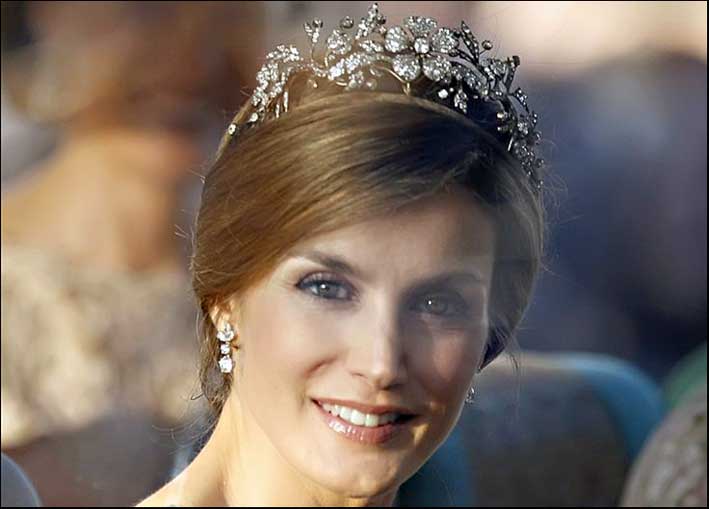
The Niarchos rubies. By Van Cleef et Arpels, they are a wedding present in Sofia of Greece by the Greek shipowner. The necklace consists of a chain mounted in gold with cabochon rubies of different sizes, each surrounded by diamonds. The tiara is a double row of the same motif of the necklace and can be used as a two-round necklace or as a long sautoir. To complete the set of drop earrings.
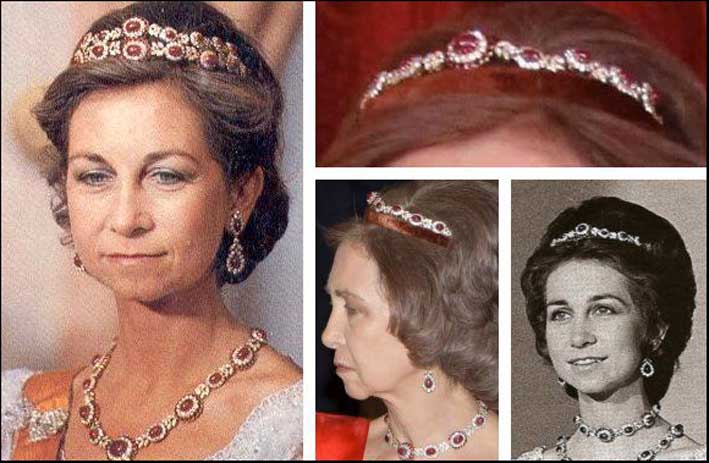
The Russian tiara. Made of platinum, pearls and diamonds for Christine of Austria, regent of Spain, is inspired by the traditional Russian female headdress Kokoshnikc, from which the name comes.
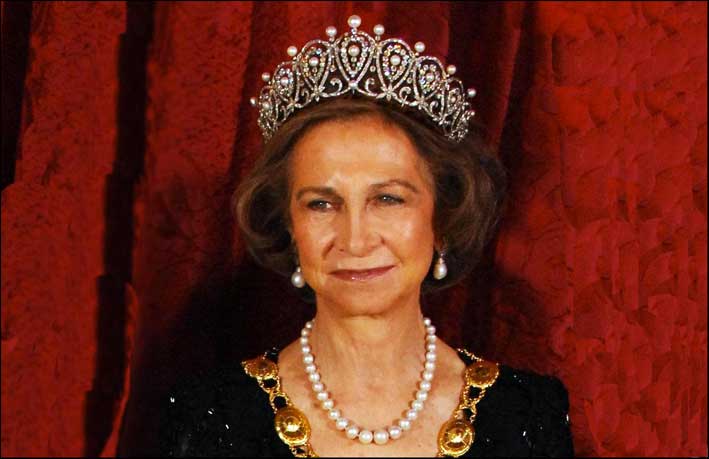
The tiara of lily flowers. The most spectacular among the wedding gifts of Alfonso XIII, was created in 1906 by the jeweler Ansorena of Madrid and is composed of brilliant cut diamonds and cushion, on a platinum frame that draws the heraldic symbol of the Bourbons: the lilies. Queen Sofia has worn it only on special occasions.
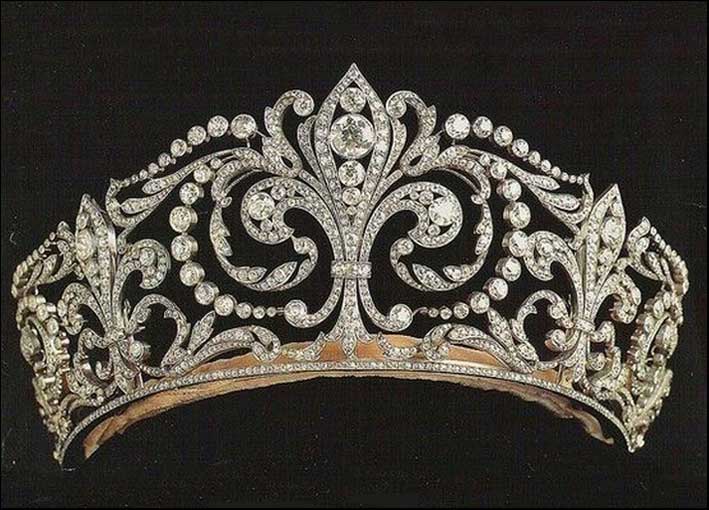
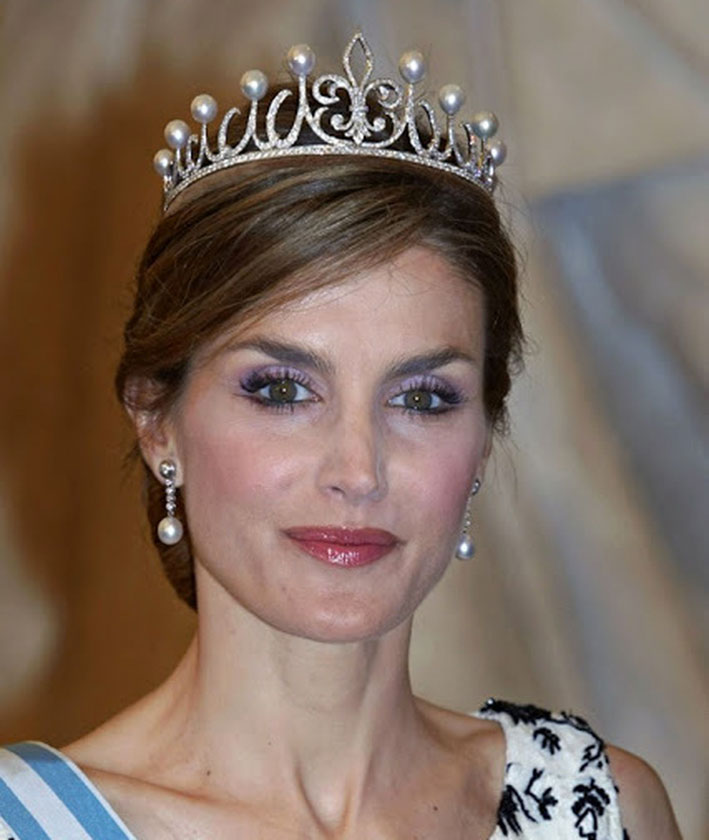





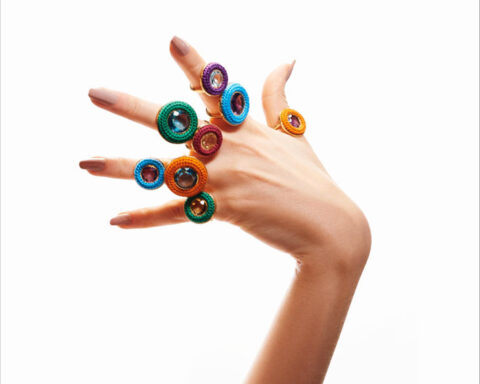
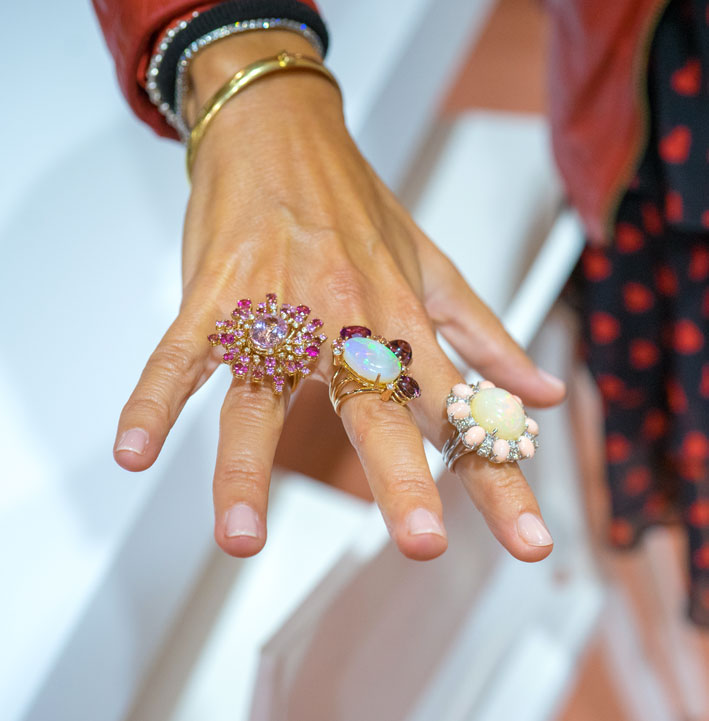


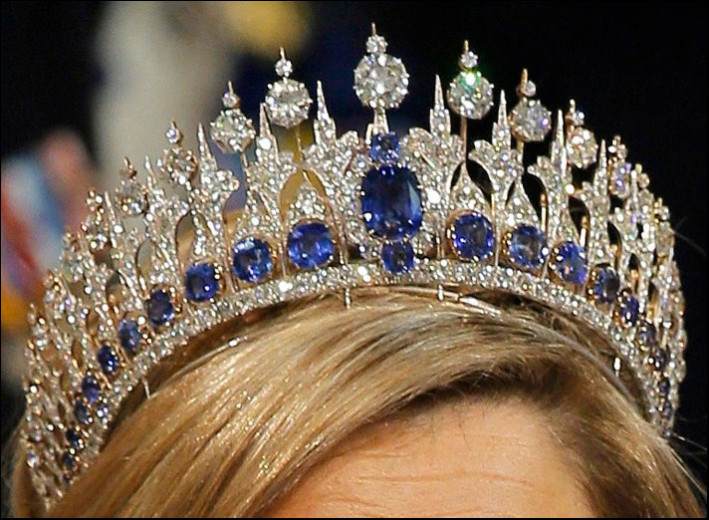
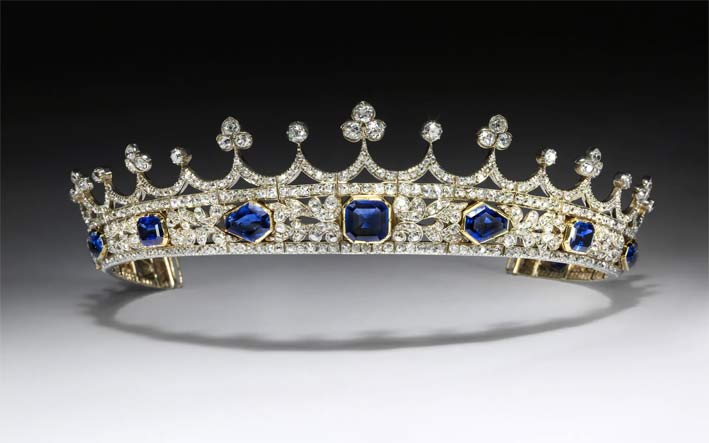
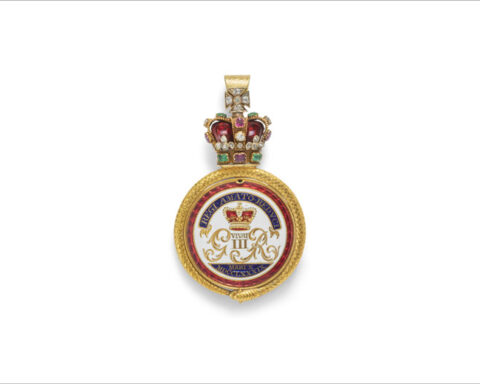
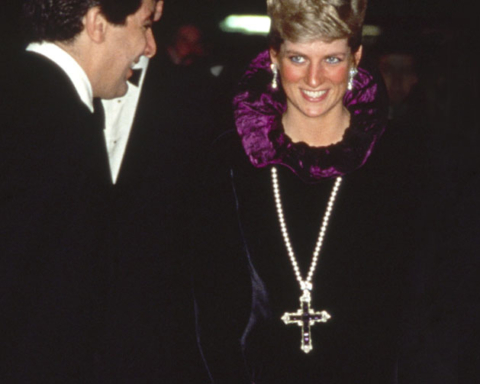
Le diadème Mellerio de diamants et perles poires n’a pas été vendu chez Drouot (dès le 30 juin 1878) par Isabelle 2 tout simplement pour cause : Isabelle 2 a reçu une rente de l’Espagne après la restauration de son fils, Alphonse 12, et c’est avec cet argent qu’elle a acheté de nouveaux bijoux au joailler français tel un collier et un diadème étoilés¨¨
Merci Philippe pour vos précisions, nous corrigerons volontiers le texte.